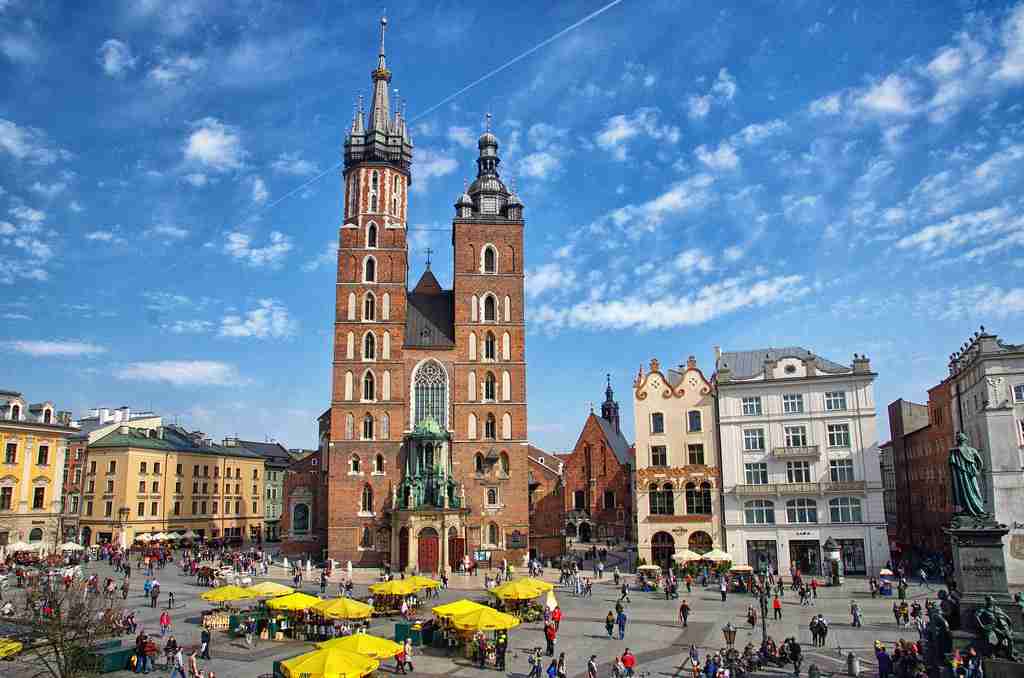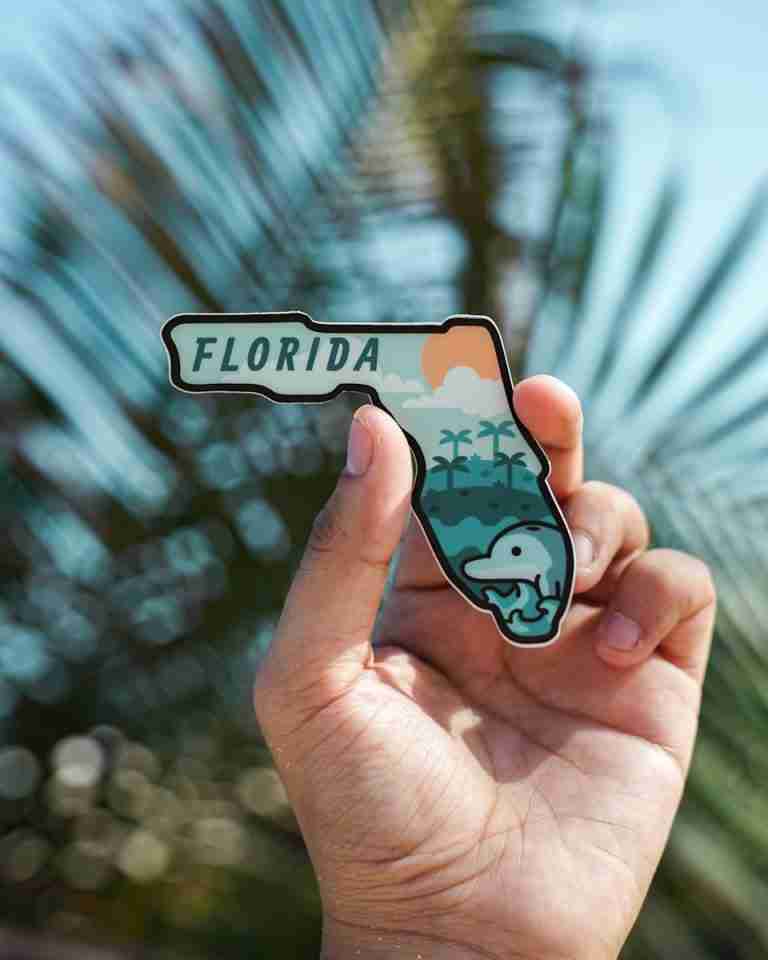23 Fun Facts About Poland | Unique and Unusual Facts
1. Poland has one of the oldest salt mines in the world.
One of the fun facts about Poland is that the Wieliczka Salt Mine, located near Kraków, is one of the oldest salt mines in the world. Dating back to the 13th century, this UNESCO World Heritage site has been producing salt for over 700 years.
The mine features intricate tunnels, underground lakes, and chapels carved entirely out of salt. Today, it is a popular tourist destination, attracting visitors from around the globe who are eager to explore its fascinating underground world.
2. Poland is the ninth largest country in Europe.
In terms of land area, Poland ranks as the ninth largest country in Europe, covering approximately 312,696 square kilometers. This extensive territory includes a diverse range of landscapes, from mountains and forests to lakes and plains.
Poland’s size and varied geography offer numerous opportunities for outdoor activities and tourism, making it a destination worth exploring.
3. Poland has one of the highest literacy rates in the world.
Poland prides itself on having one of the highest literacy rates globally, with over 99% of the population being able to read and write. This achievement reflects the country’s strong emphasis on education and access to quality schooling.
Educational reforms and investments in the education system have contributed to this impressive literacy rate, ensuring that Poles are well-educated and skilled.
4. Poland is home to the world’s biggest castle.
Another interesting fact about Poland is that it hosts the largest castle in the world by land area—the Malbork Castle. Built in the 13th century by the Teutonic Knights, this medieval fortress is a stunning example of Gothic architecture.
Malbork Castle, a UNESCO World Heritage site, covers an impressive 143,591 square meters. It serves as a major tourist attraction, offering a glimpse into the rich history and cultural heritage of Poland.
5. Poland has the most winners of the ‘World’s Strongest Man’ title.
Poland boasts an impressive record in strength sports, having produced the most winners of the ‘World’s Strongest Man’ title. Polish athletes like Mariusz Pudzianowski have claimed this prestigious title multiple times, showcasing Poland’s strength on the global stage.
Pudzianowski, in particular, is renowned for winning the title a record five times, making him a national hero and an icon in the world of strength sports.
6. Poland celebrates a unique holiday called Fat Thursday.
Fat Thursday, or Tłusty Czwartek, is a popular Polish holiday celebrated on the last Thursday before Lent. On this day, Poles indulge in sweets, particularly doughnuts called pączki, as a way to enjoy treats before the fasting period.
This festive day is marked by the consumption of various pastries and is a beloved tradition in Poland, reflecting the country’s rich culinary heritage.
7. Poland has more than 16 UNESCO World Heritage sites.
Poland is rich in cultural and natural heritage, with over 16 UNESCO World Heritage sites within its borders. These include historical landmarks, architectural wonders, and natural reserves that highlight the country’s diverse and vibrant history.
Notable sites include the Historic Centre of Kraków, the Białowieża Forest, and the Auschwitz-Birkenau concentration camp, each offering a unique glimpse into Poland’s past and present.
8. Poland is the birthplace of the bagel.

A lesser-known fact about Poland is that the bagel, a popular type of bread, originated in the country. The first mention of bagels dates back to the 17th century in Kraków, where they were given as gifts to women in childbirth.
Today, bagels are enjoyed worldwide, with many variations and flavors. This Polish culinary invention has become a staple in many cultures, especially in the United States.
9. Poland is the birthplace of the pianist Frédéric Chopin.
Renowned composer and pianist Frédéric Chopin was born in Żelazowa Wola, Poland, in 1810. His contributions to classical music are celebrated globally, and his works remain a cornerstone of piano repertoire.
Poland honors Chopin’s legacy with various festivals and events, including the International Chopin Piano Competition, which attracts the world’s best pianists. His birthplace is now a museum, drawing visitors from all over the world.
10. Poland has a rich history of Nobel Prize winners.
The country has a proud tradition of producing Nobel Prize winners across various fields, including literature, physics, chemistry, and peace. Notable laureates include Marie Curie, who won Nobel Prizes in both Physics and Chemistry, and Wisława Szymborska, awarded the Nobel Prize in Literature.
These achievements highlight Poland’s significant contributions to global knowledge and culture. The nation continues to foster talent and innovation, making its mark on the international stage.
11. Poland has over 2,000 lakes.
One of the most impressive natural features in the country is its abundance of lakes. There are over 2,000 lakes scattered across Poland, with the Masurian Lake District being particularly notable. This region alone boasts more than 1,000 interconnected lakes, offering breathtaking views and numerous recreational opportunities.
Outdoor enthusiasts flock to the Masurian Lake District for sailing, kayaking, and fishing. It’s also a serene spot for those looking to unwind and immerse themselves in nature’s beauty.
12. Poland’s national symbol is the white eagle.
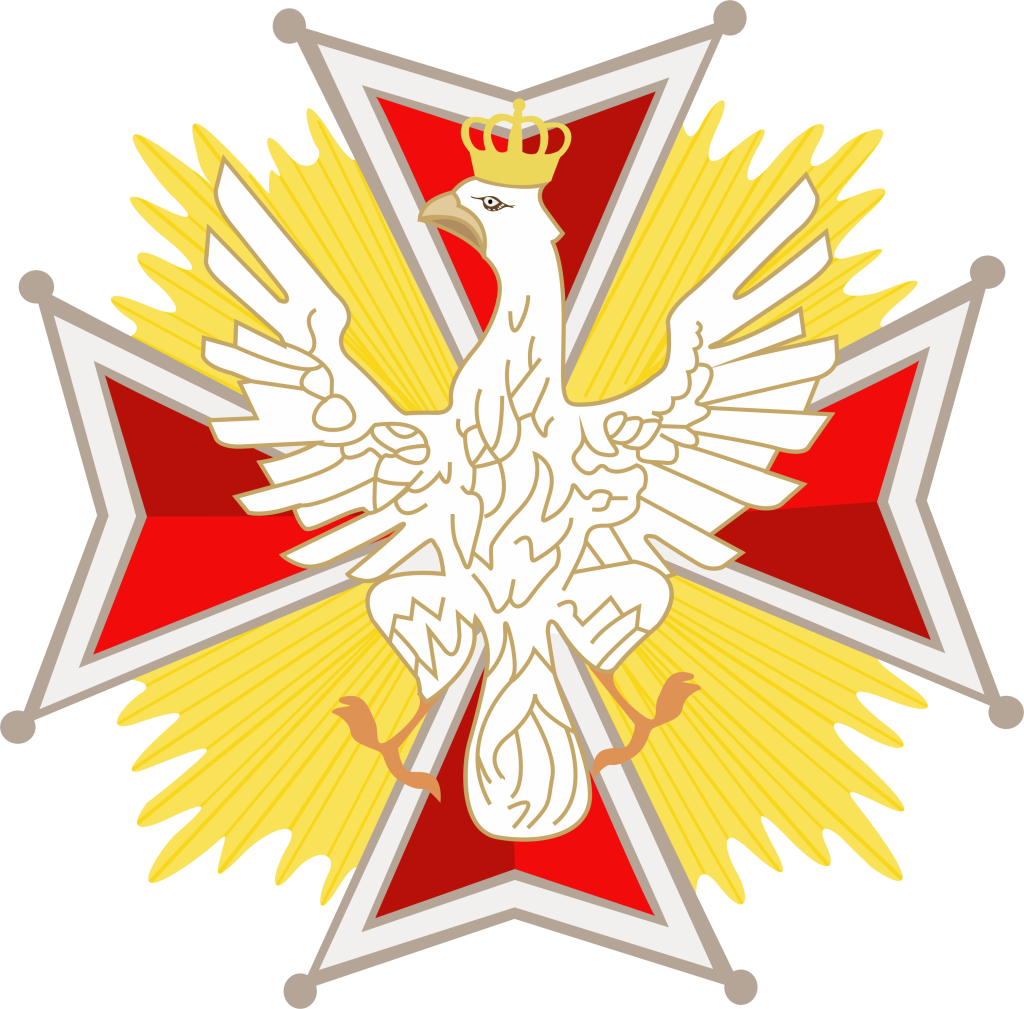
The white eagle is a powerful symbol in Polish culture and history, representing the nation’s strength and resilience. It appears on the country’s coat of arms and is a prominent feature in many national emblems and flags.
This emblem dates back to the 10th century and is deeply rooted in Polish identity, symbolizing freedom, honor, and patriotism.
13. The Białowieża Forest is one of the last primeval forests in Europe.
Poland is home to the Białowieża Forest, one of Europe’s last remaining primeval forests. Located on the border with Belarus, this ancient woodland is a UNESCO World Heritage site and a biosphere reserve, teeming with diverse flora and fauna.
Visitors to the Białowieża Forest can explore its untouched wilderness and see European bison, the continent’s heaviest land animals, in their natural habitat. It’s a must-visit for nature lovers and wildlife enthusiasts.
14. Poland has a desert.
Surprisingly, the country is also home to a desert. The Błędów Desert, situated in the southern part of Poland, covers an area of 32 square kilometers and is often referred to as the “Polish Sahara”
Formed through natural and human activities such as deforestation and mining, the Błędów Desert is now a popular hiking destination. It offers a stark contrast to Poland’s lush forests and green landscapes.
15. It is a leading producer of apples.
Poland ranks among the top apple producers in the world. Its orchards produce a significant portion of Europe’s apples, thanks to the country’s favorable climate and fertile soil.
Polish apples are renowned for their taste and variety, and they are exported to many countries. The annual Apple Festival in Sandomierz celebrates this fruit, attracting visitors with culinary delights and cultural events.
16. Poland is the world’s largest exporter of amber.
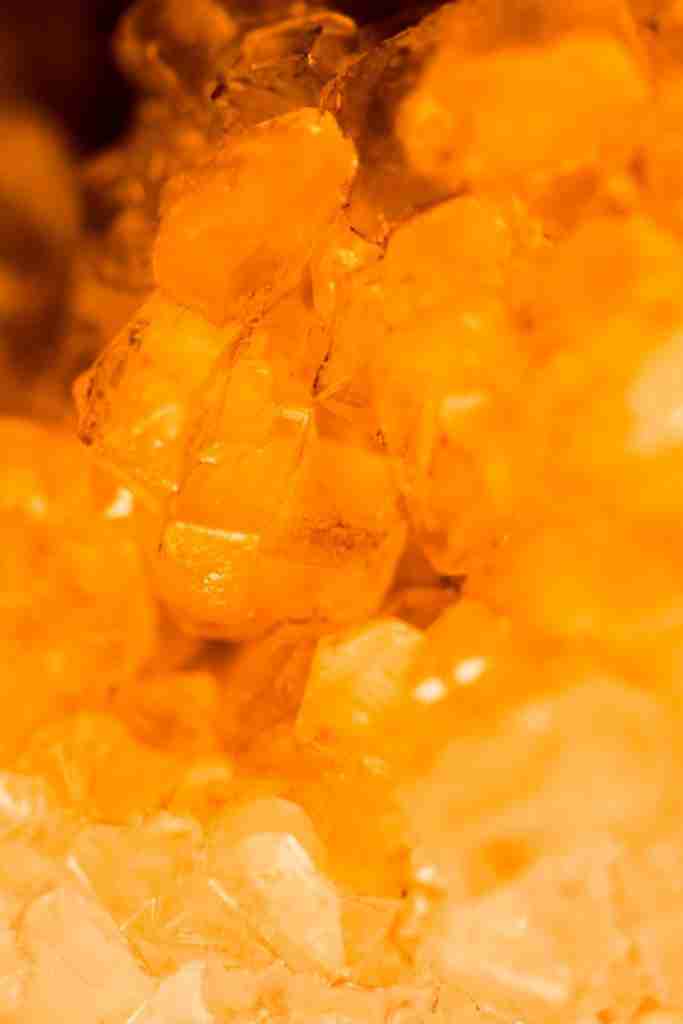
Poland is renowned for its amber, often referred to as “Baltic gold” The country is the world’s largest exporter of this fossilized tree resin, which is highly prized for its beauty and use in jewelry.
The Baltic Sea coast, particularly around the city of Gdańsk, is famous for its amber deposits. Visitors can explore museums, shops, and workshops dedicated to this exquisite gemstone.
17. It has a unique Christmas tradition of sharing a wafer.
One of the unique Christmas traditions in Poland is the sharing of the opłatek, a thin wafer, on Christmas Eve. Family members break off pieces of the wafer and exchange good wishes, symbolizing unity and forgiveness.
This tradition is an integral part of the Polish Christmas celebration, reflecting the importance of family and community in Polish culture. The opłatek is often embossed with religious images, adding to its symbolic significance.
18. Poland has the highest number of storks in Europe.
The country is home to the highest population of white storks in Europe, with around 25% of the continent’s stork population nesting here. These majestic birds are often seen in rural areas, nesting on rooftops and telephone poles.
The white stork is considered a symbol of good luck and prosperity in Polish folklore. Efforts to preserve their habitats have been successful, ensuring that Poland remains a haven for these iconic birds.
19. It is famous for its pierogi.
Pierogi, a type of dumpling, are one of Poland’s most beloved traditional dishes. These delicious treats are typically filled with a variety of ingredients, such as potatoes, cheese, meat, or fruit.
Pierogi are enjoyed year-round and are a staple at Polish festivals and celebrations. Their popularity has spread worldwide, with many countries embracing and adapting this classic Polish comfort food.
20. Poland is home to Europe’s oldest restaurant.
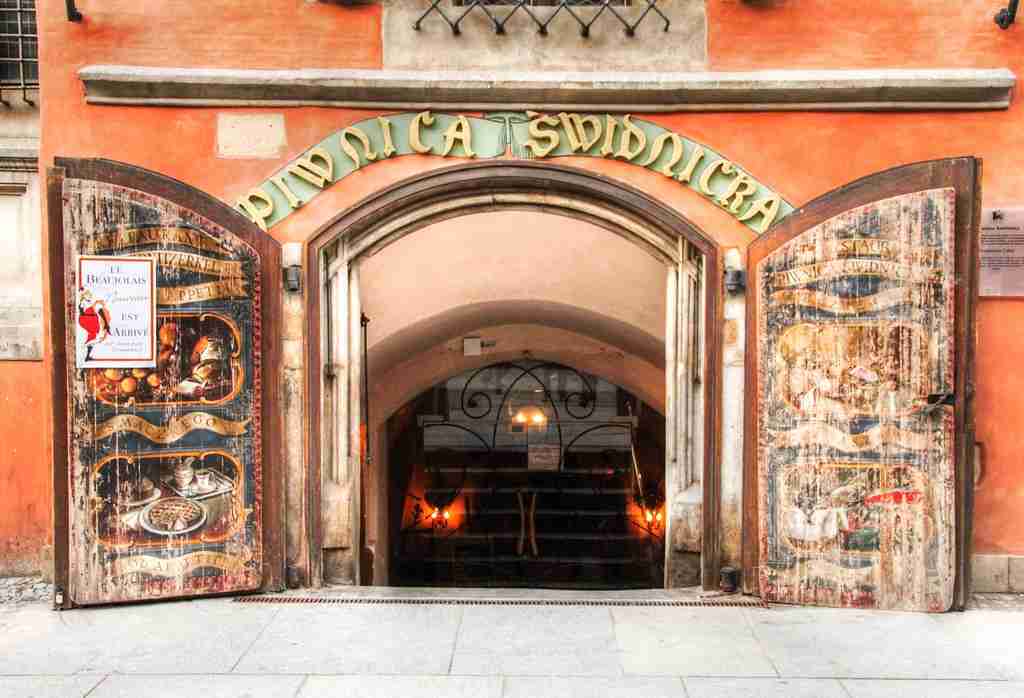
Another fascinating Poland fact is that the Piwnica Świdnicka in Wrocław is considered Europe’s oldest restaurant. Established in 1273, this historic eatery has been serving customers for over seven centuries.
The restaurant offers a unique dining experience with a menu that reflects traditional Polish cuisine, making it a must-visit for food enthusiasts and history buffs alike.
21. The country has a strong tradition of folklore and mythology.
Poland’s rich folklore and mythology are deeply embedded in its cultural heritage. Stories of mythical creatures, legendary heroes, and enchanted forests are passed down through generations, reflecting the country’s historical and cultural diversity.
These tales are celebrated in festivals, literature, and art, preserving Poland’s unique cultural identity. The influence of folklore can also be seen in traditional music, dance, and crafts, which remain vibrant aspects of Polish life.
22. The Constitution of May 3, 1791, was the first in Europe.
The Constitution of May 3, 1791, is a significant milestone in Polish history, being the first modern constitution in Europe and the second in the world, after the United States. This progressive document aimed to reform and modernize the Polish-Lithuanian Commonwealth.
The constitution introduced political equality between townspeople and nobility and sought to protect the rights of peasants. It is celebrated annually on Constitution Day, a national holiday that honors Poland’s commitment to democracy and reform.
23. Poland has one of the most vibrant jazz scenes in Europe.
The country’s jazz scene is renowned for its creativity and influence, with a history that dates back to the early 20th century. Poland has produced many acclaimed jazz musicians and hosts numerous jazz festivals, such as the Warsaw Summer Jazz Days and the Jazz Jamboree.
Polish jazz is characterized by its unique blend of traditional and modern elements, attracting jazz enthusiasts from around the world. This vibrant musical tradition continues to evolve, contributing to Poland’s rich cultural tapestry.
FAQs
Poland is home to the Błędowska Desert, the largest desert in Central Europe, created by a melting glacier thousands of years ago
In Poland, name days (imieniny) are celebrated with as much importance as birthdays. Each day of the year is associated with a specific name, and people celebrate on the day associated with their name
The Palace of Culture and Science in Warsaw, a symbol of Soviet influence, is not only notable for its architecture but also for housing dozens of cats to control the mice population. The upper floors are home to kestrels and even a bee apiary
In Poland, it’s common to mix beer with fruit syrup, particularly raspberry syrup. During winter, a traditional drink called grzaniec, which is hot beer spiced with cinnamon and cloves, is popular
Poland disappeared from the map for 123 years due to partitions by Russia, Prussia, and Austria, and reappeared as an independent nation after World War I in 1918

